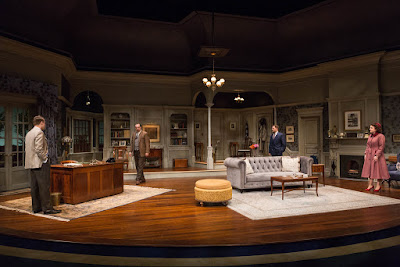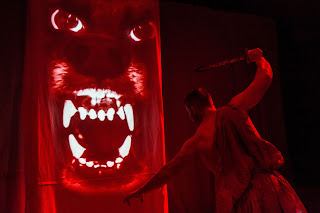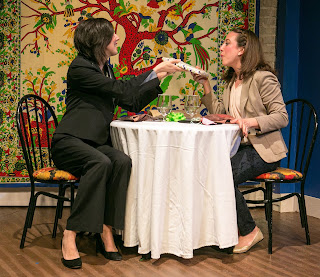"Dial 'M' for Murder": IRT makes good connection to classic suspense drama

I try not to be a hoarder of printed matter, but theater and concert programs will tend to mount up over a full schedule of attended performances. Among the programs I find hardest to recycle are Indiana Repertory Theatre' s. Glossy, informative, and well laid-out, they get my attention from cover to cover (OK, I only glance at the list of donors, vital as they are). Police detective (second from left) shares his thinking about the murder with Max Halliday and the Weddices . Particularly worth saving and occasionally revisiting are the brief statements by IRT production teams, as well as the behind-the-scenes interviews. Oh, and the director's essays, and the dramaturg's, and of course executive artistic director Janet Allen's. For Frederick Knott's "Dial 'M' for Murder," I was especially fascinated by what scenic designer Kate Sutton-Johnson had to say. She focuses on one crucial visual element: "the upper surround (which we've














